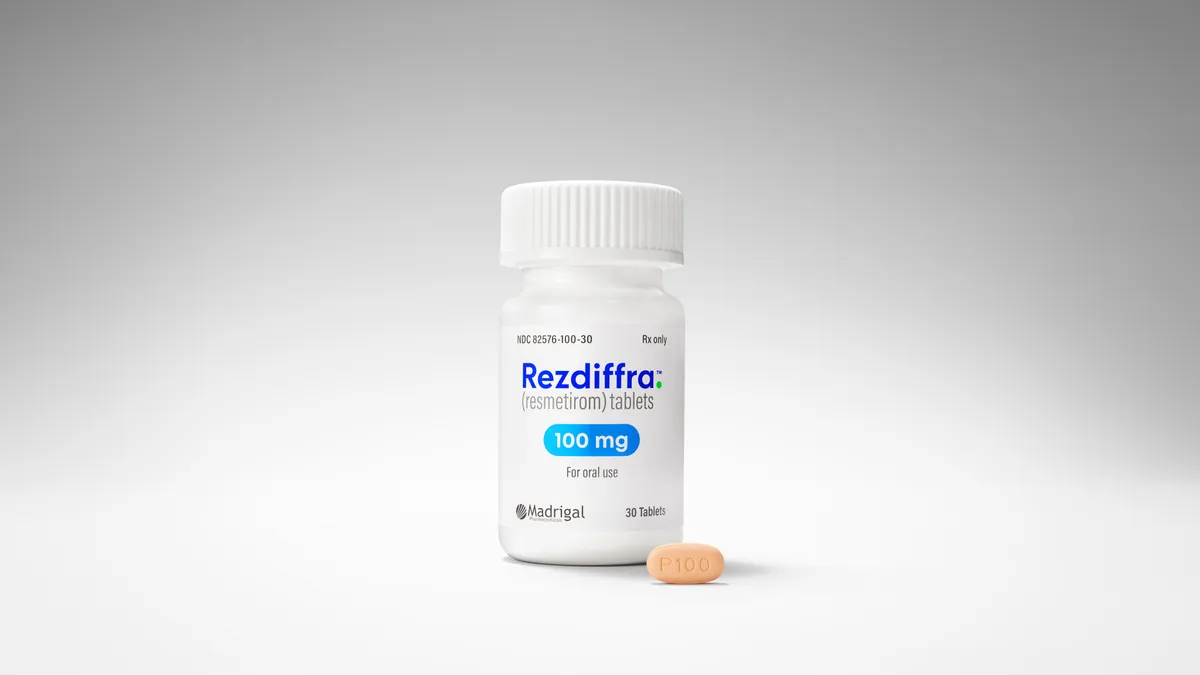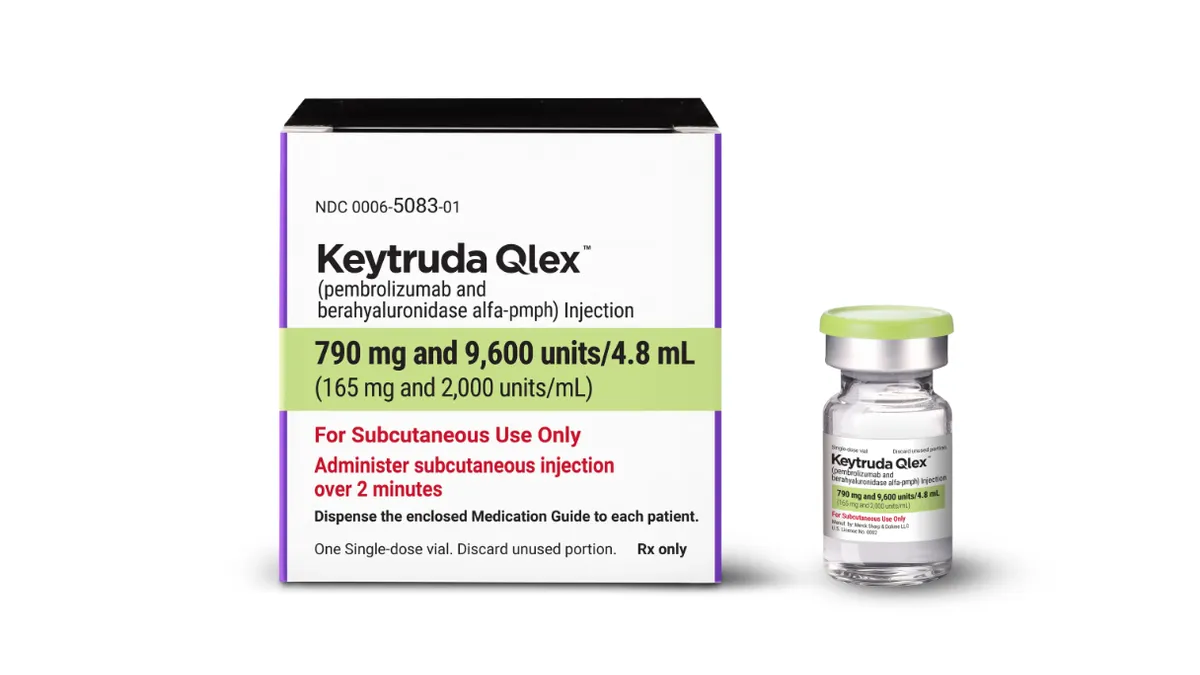When a novel drug switches from prescription to over-the-counter, it can be a win-win for manufacturers. The drugmakers may receive a patent boost and more advertising wiggle room, and patients stand to gain greater medicine access and healthcare autonomy.
Now, a new plan from the FDA aims to broaden the type and number of drugs able to make the Rx-to-OTC switch, with the goal of improving patient choice.
According to a study from the Consumer Health Products Association, over 81% of adults have used an OTC medicine as a first treatment option. Another study from The University of Chicago found the introduction of an OTC drug can increase use of a drug class by 30%.
First proposed in June, the Nonprescription Drug Product with an Additional Condition for Nonprescription Use (ACNU) rule would create a new OTC approval pathway that would require manufacturers to include additional steps to help consumers make their own medication decisions.
This increased autonomy “could improve public health by broadening the types of nonprescription drug products available to consumers,” the FDA said in the proposal.
Currently, companies rely on labeling to help patients appropriately choose and use an OTC medication, but the new rule would provide another, more comprehensive way for them to help consumers pick medications. While the proposal provides companies with some “flexibility regarding the types of additional conditions” they may propose, it suggests one type might require consumers to fill out a questionnaire either online or through an automated phone system to determine their eligibility for a drug.
If implemented, the rule could provide more opportunities for prescription drug companies, Raqiyyah Pippins, a partner at the law firm Arnold & Porter, told PharmaVoice.
In comment letters submitted to the agency last month, Sanofi’s consumer health division argued the proposal has the potential to “modernize” the Rx-to-OTC drug switch process, and the lobbying group PhRMA noted the rule might allow “patients to access therapies for conditions and diseases for which nonprescription drugs are not currently available, including certain chronic diseases and communicable diseases.”
Despite this support, industry stakeholders also expressed several concerns about the plan’s proposed application process, marketing and reporting requirements, and urged the FDA to provide greater clarification in the final version. Here’s a breakdown of the proposal’s major provisions, and the pharma industry’s recommended changes.
Application process
The rule: The proposal does not require a drug to first be marketed as a prescription product to receive approval as a nonprescription drug with an ACNU. However, if a drug is first approved as a prescription product, it requires the company to submit a whole new application, rather than a supplementary application, to gain ACNU approval.
The FDA designed it that way to allow both the prescription product to remain on the market even after the OTC application with an ACNU is approved, arguing that it “would ensure greater access to needed drugs by providing flexibility in how to obtain them.”
Applicants also need to explain “why the ACNU is necessary to ensure appropriate self-selection or appropriate actual use,” and why labeling is insufficient to do so.
PhRMA’s recommendation: This process “would be unduly burdensome” for applicants, Kelly Falconer Goldberg, vice president and senior counsel for biopharmaceutical regulation at PhRMA, wrote on behalf of the organization in a Nov. 25 comment letter to the FDA.
The FDA, rather than a drug company, should determine whether an ACNU is necessary, and it should in appropriate circumstances allow applicants to seek an ACNU “by submitting a supplement to an approved NDA,” Goldberg further argued in the letter.
“If FDA believes that labeling alone can allow appropriate self-selection and use, an approval decision is far too late to so advise an ACNU product applicant,” she said, noting that the application is a significant investment, particularly in the early days of the rule’s implementation. Goldberg goes on to assert that requiring a company to apply for an ACNU by showing labeling is insufficient and would require them to “prove a negative.”
CVS Health’s recommendation: Meanwhile, CVS asked that the U.S. regulator ensure that it will only approve “technology neutral” additional conditions under the pathway that do not require a proprietary platform to function.
“By limiting approvals to the specific information needed to be collected, rather than the specific method for its collection, FDA can prevent the proliferation of excessive proprietary platforms from each manufacturer that will ultimately limit competition and reduce patient access,” Melissa Schulman, senior vice president of government and public affairs at CVS Health, wrote in a Nov. 22 letter.
"The proposed rule might play an important role in advancing this objective by allowing patients to access therapies for conditions and diseases for which nonprescription drugs are not currently available."

Kelly Falconer Goldberg
Vice president and senior counsel for biopharmaceutical regulation, PhRMA
The pharmacy company clarified that it isn’t against “proprietor methods,” such as an individual website or kiosk, but said including such platforms in the approval applications “could create significant barriers to patient access” by limiting the number of retailers able to accommodate the different platforms.
Simultaneous marketing
The rule: Under current FDA rules, a drug may only be marketed simultaneously as a prescription and OTC product if a “meaningful difference” such as indication area, strength, dosage or patient population exists between the two products.
But the proposed ACNU rule stipulates that, in this case, “the additional condition(s) that allow a nonprescription drug product to be safely used without the supervision of a healthcare practitioner would be a meaningful difference” because it separates the patient populations who can access the drug with and without a prescription.
Sanofi Consumer Healthcare’s recommendation: That justification lies on slippery legal grounds and could undermine the point of the rule, Sanofi, along with the Consumer Healthcare Products Association and several other groups, argued in comment letters.
“Unilateral application of simultaneous marketing provides a disincentive for sponsors to pursue switches with ACNU by making already difficult, risky and expensive ACNU enabled switches even less attractive,” Michael Bailey, head of scientific affairs for North America at Sanofi Consumer Healthcare, wrote in the company’s Nov. 21 comment letter.
He disputes the FDA’s claim that maintaining a prescription option is important to allow patients to continue initiating treatment with their doctors, stating that “healthcare providers currently and routinely recommend OTC use for their patients.”
Further, he claims that the need for simultaneous marketing may depend on the drug class and indication, arguing that there are “differences between chronic disease drugs versus a drug that is taken on episodic basis for non-emergency use.”
Post-marketing reporting
The rule: Required incident reports are standard for most FDA rules, and this one is no exception. It asks that companies report “any event that results from a deviation in an applicant's implementation of the ACNU that may cause or lead to inappropriate medication use or consumer harm, such as a consumer gaining access to the drug product without fulfilling all necessary conditions for the nonprescription drug product with an ACNU.”
PhRMA’s recommendation: Not only is this requirement “unduly broad,” it would also inundate the FDA to the point of “undercutting the agency’s ability to timely review post-market reports and identify those reports that signal true public health risks,” Goldberg wrote in PhRMA’s letter.
Instead, the organization urges the FDA to “require that ACNU products be subject to the same post market reporting requirements as other approved drugs, including drugs with REMS to manage serious risk,” and only add additional requirements for situations where consumers do not meet requirements for a drug but gain access to it anyway.

















